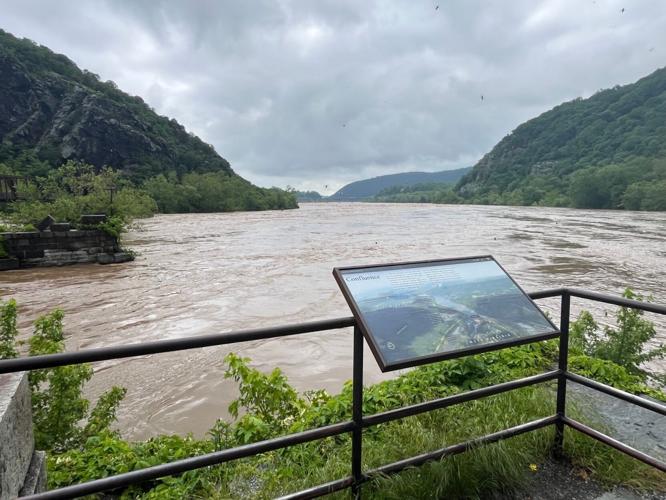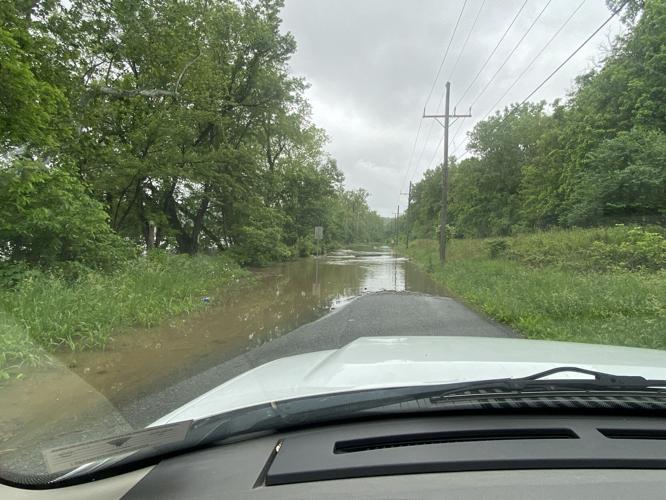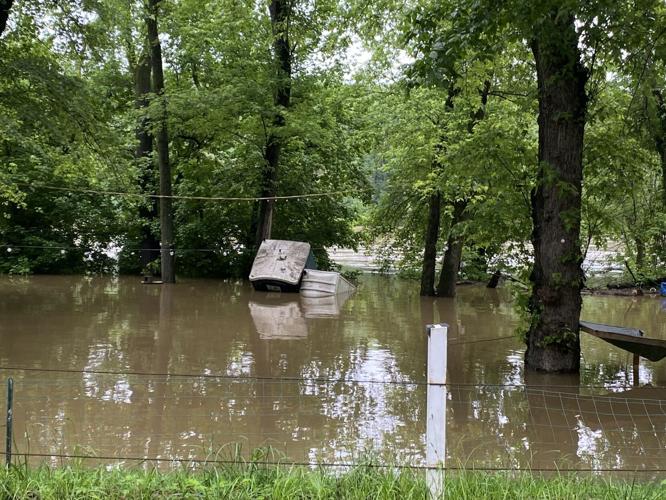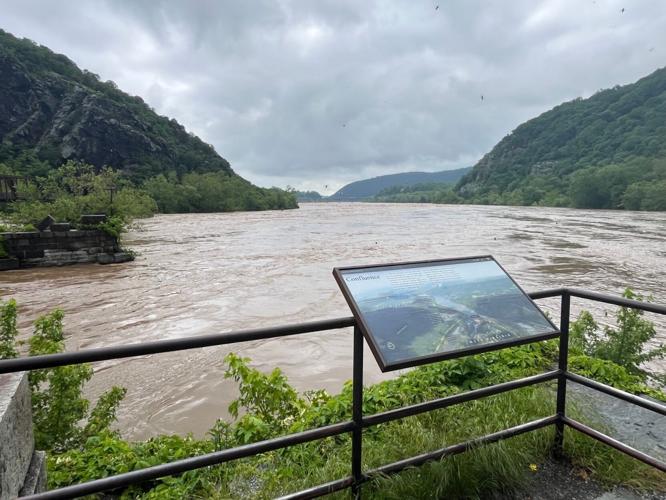MARTINSBURG — A number of road closures and potential flooding instances have been reported following more than two inches of rainfall in the Eastern Panhandle over the past 24-36 hours.
Even after rainfall has diminished, flood waters continue to be a possibility, as creeks and rivers in the area continue to see increased capacity.
Areas along the Opequon Creek in Berkeley County have seen excessive water overflowing the banks, causing some temporary road closures. The rise of the Potomac and Shenandoah rivers has also led to some road closures in Jefferson County.
According to information from the National Weather Service, the status at the Opequon near Martinsburg has changed from minor flooding to no flooding as waters have receded.
Areas where flooding concerns continue include the Potomac River at Shepherdstown, where waters are expected to rise and cause flooding through this evening. As of 10 a.m. Thursday, the National Weather Service reported that the stage was 23.2 feet, 8.2 feet above flood stage, at the boat ramp in Shepherdstown. The river is expected to recede, barring additional heavy rains to the area.
The Jefferson County Office of Homeland Security and Emergency Management has announced flood warnings for several areas, including the Shenandoah River at Millville. That warning is in effect until late this evening.
“The river is expected to rise to a crest of 13.3 feet this afternoon,” Stephen Rivera shared on Thursday, with flood stage at 10 feet.
A flood warning is also in effect for the Potomac River at Harpers Ferry, along with Shepherdstown. At Harpers Ferry, flood stage is 18 feet. The stage was 19.5 feet on Thursday morning.
Rivera shared in a recent press release that a flood warning is issued when flooding is imminent or occurring. Citizens should be prepared to take action and ensure they have enough supplies, food and water to last several days should flooding occur that prohibits access either to or away from a home.
Citizens are also encouraged to pay attention to weather reports and local updates and alerts that may indicate such emergencies as flash flooding. Should evacuation be necessary, one should take several days’ worth of supplies, as well as necessary medications and critical documents.
Drivers and pedestrians alike are encouraged not to attempt crossing floodwaters. The depth of the water visible from a driver’s perspective is not always obvious and just a foot of moving water can sweep a vehicle off the road. It takes only six inches of moving water to knock one off their feet when walking. The mantra “Turn around, don’t drown” may be one that is repeated often but should be heeded for the sake of safety.




